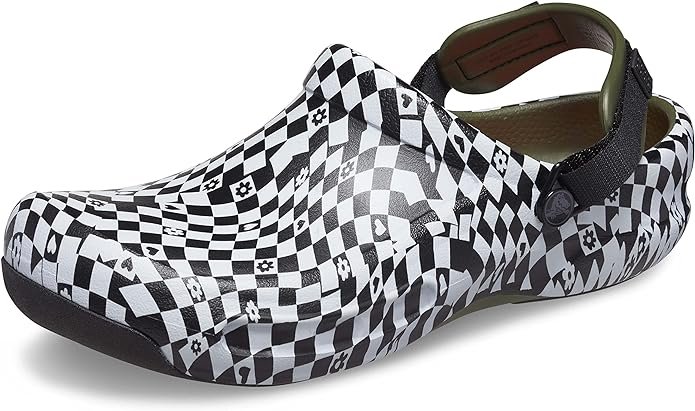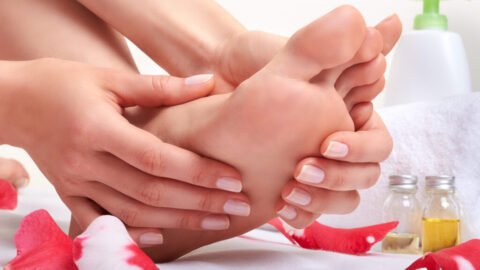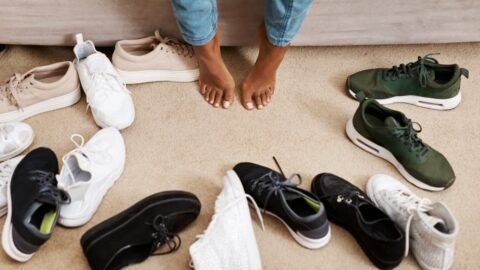Foot Exercises for Nurses: Essential Tips for Comfort and Endurance
Nurses often endure long hours on their feet, leading to discomfort and soreness. Maintaining foot health is crucial for their wellbeing and longevity in the profession. Regular foot exercises can significantly improve comfort and reduce the risk of foot-related complications. These exercises are designed to strengthen the muscles, improve circulation, and provide relief from the stresses of prolonged standing and walking.
Incorporating a routine of stretches and strengthening maneuvers for the feet can make a substantial difference in a nurse’s daily life. Simple stretches before and after shifts, as well as during breaks, can help keep feet feeling their best. Techniques, such as calf stretches and toe curls, can be easily integrated into a nurse’s schedule.
Moreover, practices like using compression socks aid in managing inflammation and promoting blood flow, thus helping to soothe sore feet after a long shift. Alongside the right footwear, these exercises and practices form a comprehensive approach to foot care for nurses, enabling them to stay comfortable and focused on providing the best possible care to their patients.
Anatomy of the Foot: Understanding the Basics

The human foot is a complex structure that serves as the foundation for the body’s stability and movement. Understanding its anatomy is essential, especially for those who are on their feet for extended periods, such as nurses.
Bones: The foot contains 26 bones, accounting for a quarter of all the bones in the human body. These bones are grouped into three categories:
- Tarsal bones: Comprising the ankle and the heel.
- Metatarsal bones: The long bones located in the middle part of the foot.
- Phalanges: The toe bones.
Joints: There are 33 joints in the foot, which allow for the flexibility and movement necessary to walk, run, and balance.
Muscles, Tendons, and Ligaments: Over 100 muscles, with their corresponding tendons and ligaments, provide movement and stability. The key muscular structures include:
- The Achilles tendon, connecting the calf muscle to the heel.
- The plantar fascia, a thick band of tissue that runs across the bottom of the foot.
The cascading network of nerves, blood vessels, and soft tissues all work in conjunction to support the foot’s intricate functions.
Foot Conditions: Common foot problems that can afflict individuals include plantar fasciitis, bunions, and flat feet, sometimes exacerbated by prolonged periods of standing or walking.
By fully understanding the foot’s anatomy, healthcare professionals can better manage foot health and endure long hours of providing care.
Importance of Foot Health for Nurses

Nurses spend many hours on their feet, often exceeding twelve hours during a busy shift. Proper foot health is crucial as it helps to sustain the overall well-being and endurance of nurses throughout their long, demanding workdays.
The role of a nurse involves:
- Standing for prolonged periods.
- Walking briskly through halls.
- Lifting heavy equipment and aiding patients.
This level of activity places considerable stress on their feet and lower extremities, leading to potential health issues such as:
- Plantar fasciitis: inflammation of the tissue running across the bottom of the foot.
- Varicose veins: enlarged veins caused by prolonged standing.
- Edema: swelling in the feet and ankles due to fluid buildup.
Preventive measures and foot care strategies, like wearing compression socks for improved circulation and arch support, are essential in mitigating these issues. Moreover, routine stretching and foot exercises can alleviate discomfort and prevent injury.
In the context of patient care, a nurse’s mobility and ability to respond quickly are vital. Ensuring that nurses have healthy feet directly correlates to their capacity to provide optimal care. Ignoring foot health can not only lead to personal discomfort but may also compromise the quality of patient care.
Collaboration with foot care specialists can be beneficial for nurses to receive adequate education and preventive strategies on maintaining foot health as detailed by the American Nurse Journal. These specialists can offer tailored advice and interventions to help nurses keep their feet feeling their best.
Common Foot Problems in Nursing Professionals

Nursing professionals often face a variety of foot problems due to the long hours spent on their feet. These issues can impact overall health and job performance, making awareness and prevention crucial.
- Bunions: These painful swellings occur at the base of the big toe and are caused by prolonged pressure or friction.
- Corns and Calluses: Thickened skin areas that form to protect against rubbing, they often develop on the toes or soles of the feet.
- Heel Pain: It often results from overuse injuries such as plantar fasciitis, where the band of tissue connecting the heel bone to the toes becomes inflamed.
- Arch Pain: This can be due to strain or inflammation of the arch of the foot and is common in those who stand for extended periods.
- Blisters: Caused by friction between the skin and footwear; keeping feet dry and well-cushioned can help prevent them.
- Deep Vein Thrombosis (DVT): Nurses are at risk due to long periods of standing, which can lead to blood clots forming in the deep veins of the legs.
- Foot Fatigue: Long hours of standing and walking can lead to a general feeling of soreness and fatigue in the feet and legs.
Nurses can manage and even prevent some of these conditions through foot care routines and proper footwear. Simple strategies include regular stretching, wearing compression stockings, and ensuring that shoes provide adequate support. It’s essential that nursing professionals pay attention to foot health to maintain their ability to provide care.
Basic Foot Stretches for Daily Routine
Nurses often face foot discomfort due to prolonged periods of standing. Implementing a daily routine of basic foot stretches can help mitigate fatigue and maintain foot health.
Toe Points and Flexes
To initiate foot care, nurses can start with toe points and flexes. Sit comfortably and extend one leg forward. Point your toes away from you as far as possible, then flex them back toward your shin. This can enhance toe flexibility and reduce stiffness.
Ankle Rotations
Ankle rotations play a crucial role in maintaining ankle mobility. While seated, lift one foot and rotate the ankle clockwise for 10-15 seconds, then switch to a counterclockwise motion. Alternate between feet to promote circulation.
Arch Lifts and Curls
For supporting the arches, arch lifts and curls are beneficial. While standing, nurses can lift their arches upward while keeping their toes and balls of the feet on the ground, then curl the toes to create tension in the arch. This helps in strengthening foot muscles crucial for extended standing periods.
Strengthening Exercises

Strengthening exercises are essential for maintaining foot health, especially for nurses who spend long hours on their feet. By incorporating targeted exercises, one can increase muscle strength, enhance stability, and potentially decrease foot fatigue.
Heel Raises
Heel raises help to strengthen the calf muscles and support the arches of the feet. Nurses can perform this exercise by standing with their feet hip-width apart and pushing through the balls of their feet to lift their heels off the ground. Then, they should slowly lower their heels back down.
- How to do it:
- Stand straight, feet hip-width apart.
- Push through the balls of your feet to elevate heels.
- Hold for a few seconds, then lower slowly.
- Repeat for 10-15 times.
Toe Walks
Toe walks are designed to fortify the muscles in the toes and the front of the shin, which can alleviate the strain on the feet. One should stand on their tiptoes and walk forward for about 20 seconds, then rest and repeat.
- How to do it:
- Rise onto your tiptoes.
- Walk forward for 20 seconds.
- Rest briefly and repeat.
Foot Domes
Foot domes focus on activating the intrinsic muscles that support the arch of the foot. Perform this exercise by sitting or standing, pressing the ball of the foot down, and attempting to pull the toes towards the heel without curling them.
- How to perform:
- Sit or stand with feet flat.
- Press the ball of the foot down.
- Pull the toes towards the heel, keeping them straight.
- Repeat for 10-15 times.
Balance and Stability Workouts
Nurses often endure extended periods on their feet, making balance and stability key to managing discomfort and fatigue. Targeted workouts can enhance proprioception and muscular coordination, leading to improved posture and reduced strain during long shifts.
Single-Leg Stances
Single-leg stances are foundational exercises that strengthen stabilizing muscles and bolster balance. Nurses should start by standing on one foot, maintaining the position for 30 seconds to a minute before switching legs. Form is essential: the torso should remain upright, and hands can rest on the hips for equilibrium. It’s also beneficial to practice these stances on various surfaces to challenge balance further.
Dynamic Walking
Integrating movement into balance exercises can simulate common activities of a nurse’s workday. Dynamic walking involves stepping forward into a lunge position while maintaining control and balance. One variation is the heel-to-toe walk, which is akin to a tightrope walk and helps improve coordination and functional stability.
Balance Pads
Using a balance pad enhances the difficulty of stability exercises, engaging more muscle groups. Nurses can perform squats, step-ups, or simply stand on these pads to develop ankle stability and core strength. The instability of the pad forces fine-tuning of the body’s reflexes, increasing agility and support during prolonged periods of standing or walking.
Massage Techniques for Relief
Massage techniques can swiftly alleviate discomfort and improve circulation in nurses’ feet after long shifts. Utilizing self-massage methods and massage tools, nurses can find significant relief.
Self-Massage Methods
Ball Roll: Nurses can relieve their foot pain by rolling a tennis ball, golf ball, or a specially designed foot roller under the arch of the foot. This method helps to stretch the plantar fascia and can reduce tension and discomfort.
Thumb Work: By using their thumbs to apply pressure in circular motions along the arch and heel of the foot, nurses can directly target areas of soreness or tension, promoting relaxation and improving blood flow in these concentrated areas.
Using Massage Tools
Foot Roller: Foot rollers are specifically designed to contour to the soles of the feet, providing a more thorough and targeted massage that can activate pressure points and enhance blood circulation.
Electric Foot Massager: For deeper relief, a nurse may opt for an electric foot massager that uses various modes of vibration and pressure to thoroughly relieve soreness throughout the foot. These devices often promote relaxation and recovery more efficiently due to their motorized functions and varying intensities.
Using these massage techniques can help nurses manage foot soreness and maintain their comfort and well-being, ensuring they are ready for their next shift.
Proper Footwear Selection for Long Shifts
Selecting the right footwear is crucial for nurses who spend long hours on their feet. The key characteristics of a good nursing shoe include support, comfort, and durability.
- Support: The best shoes for nurses should provide adequate arch support and help in maintaining proper posture. Proper support can prevent common foot ailments like plantar fasciitis.
- Comfort: Nurses should look for shoes that comfortably hug the foot while allowing the toes to move freely. Shoes should not slide up and down while walking, as suggested by Dr. Smik, who recommends running shoes for nurses.
- Durability: Long shifts demand shoes that can withstand many hours of continuous use without breaking down.
A well-chosen pair should also have a non-slip sole, as the work environment can often be slick. This enhances safety and reduces the risk of falls.
Shoe Recommendations:
- Cross trainers, for example, the New Balance 608 V5, are praised for their versatility and comfort.
- For those on a budget, options like the New Balance FuelCore Nergize V1 Sneaker offer both affordability and quality.
- Slip-on shoes, such as the Clove Classic Nursing Shoe, provide convenience for nurses on the go.
Each nurse’s foot is unique; therefore, it is essential to try on several styles to find the perfect fit. Investing time in choosing the right pair pays off in the long run, ensuring comfort during those long shifts.
Ergonomic Considerations in the Workplace
Nurses frequently face physically demanding tasks during their shifts, which include long hours of standing, walking, and lifting. Ergonomic considerations in the workplace are crucial to reducing the strain of these activities and preventing injuries. Below are key points for nurses and healthcare facilities to integrate ergonomic practices:
- Workstation Adjustments: Desks, chairs, and workstations should be adaptable to the nurse’s height and preferences. They are encouraged to maintain posture with shoulders relaxed and feet flat on the floor during seated tasks.
- Lifting Techniques: When lifting or moving patients, nurses should use proper lifting techniques. Bending at the knees and keeping the back straight can prevent undue stress on the lower back.
- Equipment Use: Facilities should provide equipment designed to minimize physical exertion, such as adjustable beds and patient lifts. Utilizing these can reduce the risk of musculoskeletal injuries.
- Micro-breaks: Taking short, frequent breaks helps mitigate fatigue. Simple on-site exercises, such as ankle rolls or calf raises during breaks, can promote circulation and muscle relaxation.
- Footwear Selection: Choosing shoes with proper support and cushioning can significantly affect comfort levels and should be a consideration when planning an ergonomic workplace.
In summary, implementing ergonomics in nursing not only enhances the safety of the nurses but also promotes overall efficiency and patient care by keeping nurses comfortable and less prone to injury.
Incorporating Mindfulness and Relaxation
Nurses often face physical strain from long hours on their feet. Integrating mindfulness and relaxation techniques can aid in reducing stress and improving overall well-being. These practices may also enhance focus and contribute to better patient care.
- Focused Breathing: Nurses can utilize focused breathing exercises to mitigate stress. During breaks, one should find a quiet spot, take deep breaths, and pay attention to the airflow.
- Body Scan Meditation: A brief body scan meditation helps in identifying areas of tension, particularly in the feet, encouraging nurses to relax their muscles progressively.
- Mindfulness Practices: Simple practices, as advocated by experts, can be incorporated into a nurse’s routine, such as taking seven to fifteen mindful breaths amid a busy shift. Such pauses can rejuvenate the mind.
Integrating regular mindfulness sessions may seem challenging amidst a nurse’s hectic schedule, yet even brief moments of mindful relaxation can lead to sustained benefits. Wearing comfortable shoes is another practical step that complement these practices, ensuring that physical discomfort doesn’t detract from a nurse’s opportunity to decompress mentally.
When nurses take care of their mental health through mindfulness and relaxation, they not only maintain their physical comfort but also enhance their capacity to provide compassionate care.
Creating a Foot Care Routine at Home and Work
To maintain foot health, nurses should integrate a foot care routine into their daily lives, at both home and work. Here are key components to consider:
At Work:
- Comfortable Footwear: Nurses need footwear that securely fits and provides ample support. Opting for running shoes is advisable, as their design is meant to handle prolonged periods of standing and walking.
- Regular Breaks: Taking short breaks to sit and elevate the feet can alleviate pressure and prevent swelling.
At Home:
- Foot Soaks: A nightly foot soak can help relax the muscles and reduce tension after a long shift.
- Exercises and Stretches: Performing exercises and stretches can enhance strength and flexibility, which may prevent injuries.
Daily Routine:
- Morning:
- Stretch toes and arches before getting out of bed
- Apply a moisturizer to keep skin supple
- During the Day:
- Perform toe lifts or circles when seated
- Wear compression socks to improve circulation
- Evening:
- Elevate feet for at least 15 minutes to reduce swelling
- Gently massage feet to promote relaxation
Maintenance:
- Regular Inspection: Nurses should routinely inspect their feet for blisters, sores, or signs of infection. Prompt attention to any abnormalities is essential.
- Professional Care: Seeking periodic assessment from foot care specialists can be a proactive measure in preventive foot health.









[…] emphasizes pain relief and inflammation reduction. Options […]
[…] can help to prevent conditions such as plantar fasciitis, which may develop when the arch of the foot is strained. Wearing comfortable shoes also helps reduce leg fatigue and contributes to overall well-being […]
[…] often experience discomfort and stress on their feet due to long hours of standing and walking. Flat feet lack a natural arch, which can lead to overpronation and an uneven distribution of body weight. This increases the risk […]
[…] When selecting the best shoes for nurses with back pain, several factors come to mind. Among them, materials and construction play a large role in providing the necessary support and durability for daily wear. Additionally, the proper fit and sizing of nurse shoes ensure even weight distribution and alignment, which can prevent strain on the back. For those with specific needs, shoes compatible with orthotic insoles offer a personalized solution. Notably, the heel height of the shoe must be conducive to comfort rather than exacerbating back pain. […]
[…] problems associated with extended periods of standing and walking, such as blisters, arch pain, and heel strain. Moreover, it can reduce the risk of back pain and leg fatigue, which can otherwise be exacerbated […]
[…] of wearing unsuitable shoes can extend beyond immediate discomfort, potentially leading to posture-related issues or chronic foot ailments. Consequently, investing in high-quality nursing shoes is not a luxury but […]
[…] wellness is crucial for your overall well-being. In this section, we will discuss exercise plans and injury prevention to help you build a strong foundation for your wellness […]
[…] physical strain associated with their job. Additionally, maintaining a healthy lifestyle with regular exercise, stretches, and a balanced diet can help manage the physical demands of […]